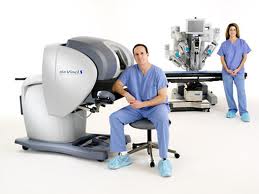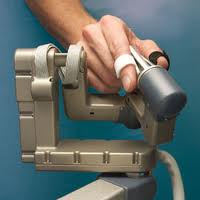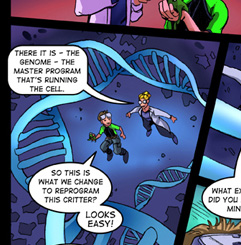This weekend I had a very interesting experience. I tried out a few million dollar’s worth of robotic surgery equipment.
The system I tried out was designed and built by da Vinci Surgery, and is in use at the Brigham and Women’s hospital here in Massachusetts. The hospital states that over 600 operations have been carried out since 2007 when the technology was introduced without need for further more invasive interventions or serious damage to any patient.
Imagine that you sit in front of a 3 dimensional image and control robotic arms with your own arm and finger movement. The arms are about as thick as pencils, and as there are 4 arms on each robot two surgeons can work together.
The great advantage is that instead of having to make a large cut so that the doctors can get their hands in, the robot makes 5 tiny cuts for the arms to pass through. There is a camera so the surgeons can see inside and they can proceed at a safe distance.
Healing time is cut down, less blood loss, less possibility of infection, less post operative pain and very little scarring, there are many advantages to this type of approach. The machinery is very easy to use. My 7 year old son could take tiny elastic bands off a test bed and place them round objects about the size of the end of my little finger, at a distance of 3 metres!
One issue is however that some people are dubious about a surgeon operating using this type of machinery, they might feel that a hand is better then a robotic arm. Having used one (not on a patient I grant you) I personally would not have any problem accepting a procedure of this type.
Robotic surgery makes us think of computerized machinery with Kraftwerk type movement and voices, but this machinery is nothing of the sort. It handles like an extension of your own body, the movement is very real and precise and in some ways the robotic arm is easier to manipulate than a human counterpart. It can turn 360 degrees upon itself, has full rotation capability and the magnification makes the process seem easier. I was shocked when I saw how small the area was that we were working on.
A training program was also on display, a series of tests to improve performance and present each operator with a score. A skilled operator can tie a knot in a piece of string or link tiny elastic bands together that would be extremely tricky using human fingers.
Below I have a series of photos and here is a link to a video showing an actual procedure so stop reading here and skip straight to the comments section if you don’t want to see them.





